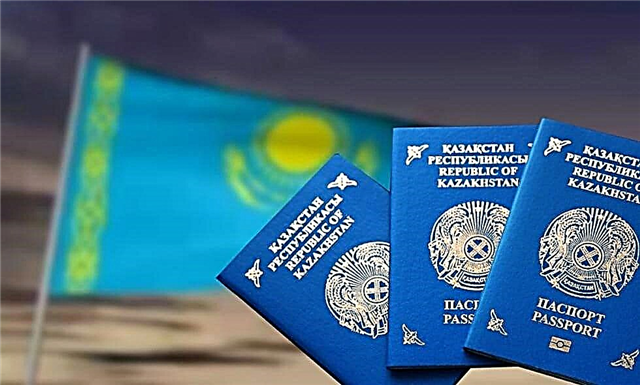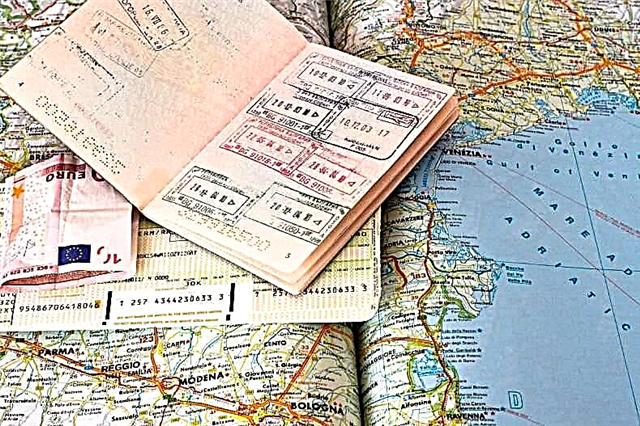Most of the states located geographically in Europe are now part of the Schengen area. A foreigner to enter this territory needs a single authorization document - a Schengen visa. It gives the right not only to get into the Schengen zone, but also to move through it without additional permits. Obtaining a Schengen visa involves the collection of a clearly regulated list of documents.
Schengen concept
Despite the transparency of the situation, it is worth distinguishing between the countries that are in the Schengen zone and those that signed the Schengen agreement (not all signatories have eliminated border controls and removed national visas from circulation). There are also states that did not sign the agreement, but entered the zone automatically.

The list of Schengen countries is constantly changing. In 2021, it includes 26 entities. The territories of some states have exceptions, for example, in Greece, Athos is located outside the zone, in Denmark - the Faroe Islands, and so on.
By the way. Ireland and Great Britain, who signed the agreement, are not included in the zone either, which means that it will not be possible to visit their territories on a Schengen visa.
Bulgaria and Romania, as well as Croatia and partly Cyprus (Republic of Cyprus) continue to use national visas, but their territories can be visited with both Schengen and each other's visas.
Types of Schengen visas
All entry permits in the Schengen area are divided into three types, designated by Latin letters A, C and D. There are also highly specialized abbreviated types: FTD, FRTD and LTV, but they will not be considered here.
Table. Schengen visa types, descriptions, powers
| A type | Description | Action |
| A | Transit on the territory of the airport. |  It only grants permission to stay at the airport of the Schengen country. Does not allow you to move around the territory of the state. It only grants permission to stay at the airport of the Schengen country. Does not allow you to move around the territory of the state. |
| WITH | A short-term visa that allows you to stay in the Schengen country for up to 90 days. |  There are four types - from C1 to C4 (the difference in the frequency and duration of stay), and this category also includes a multivisa. There are four types - from C1 to C4 (the difference in the frequency and duration of stay), and this category also includes a multivisa. |
| D | Long term or national. It allows you to stay in the country for more than 90 days. |  If issued by a country that fully complies with Schengen legislation, you can not only stay in this country for a certain period of time, but also visit all Schengen countries within 90 days from each six-month period. If issued by a country that fully complies with Schengen legislation, you can not only stay in this country for a certain period of time, but also visit all Schengen countries within 90 days from each six-month period. |
Biometrics is a mandatory procedure
The fingerprinting procedure is required to obtain a Schengen visa. Without this, even the filing of documents is impossible.
You May Also Like
Important! Applicants under 12 years of age with finger or hand injuries that make the procedure impossible are not required. Also, tourists who have long-term Schengen, open until 2015, are not fingerprinted until the end of its validity period.
To get your prints and take a digital photo, which is part of the biometrics procedure, you must register in advance. A parent must be present with a minor child over 12 years of age. It takes no more than five minutes and is done completely free of charge at the embassy.

No powders, dyes or similar ingredients are used. An imprint is made on a digital scanning equipment, to which all fingers are alternately applied. This is followed by a digital color photograph of the applicant.
Documents and registration
The list of main documents is as follows:
- The questionnaire form, which is filled in either in Latin in Russian, or in English, or in the national language of the country issuing the permit; (DOWNLOAD a sample questionnaire)

- Two color photographs not older than six months, 3.5x4.5 cm. One of them is pasted into the questionnaire (the requirements for the photo must be specified on the websites of the embassies of those countries where you intend to apply); DOWNLOAD requirements of the International Civil Aviation Organization (ICAO.

- International passport with a photocopy of the pages on which personal data is posted. At least three months of validity after the requested visa expires;
- National passport (you do not need to return it, but you need to make photocopies of all pages with personal data);
- Money for visa fee 35 euros (check with the embassy how the payment is made - cash, card, in what currency);

- Proof of funds for expenses (in each Schengen country the minimum daily allowance is different, for example, in Hungary - 4 euro, and in Switzerland - 100 euro, it is necessary to clarify);
- Medical insurance for 30 thousand euros, covering all European countries and the entire period of the visa.

You May Also Like
This is a basic list to which documentation is added depending on the purposes and types of visas.
In addition to the main list, a number of additional documents will be required.
For kids:
- A photocopy of the birth document;
- International passport;
- Parental consent (or guardian) if the trip is single or with one parent;
- A copy of the parents' current Schengen visa, if they are traveling together, but the visa is requested only for the child.
Important! Translation and certification of any documents for a Schengen visa is not required. But the embassy on an individual basis can put forward such a requirement, which will inform citizens on its website.

For tourist and private trips (to relatives):
- Accommodation document (reservation, invitation, rent);
- Trip itinerary;
- Return ticket or its booking;
- Help from work with an indication of the position, functions and salary;
- Confirmation of the degree of relationship;
- Sponsorship letter (if the applicant is a student or retired).
For property owners and businessmen:
- Proof of ownership of real estate;
- A written request from the company (in the case of a work or business trip);
- Confirmation of economic activity.
For transit passengers:
- Tickets;
- Travel route;
- Visa (other permissive document), which gives the right to enter a third country.

For training purposes:
- Confirmation of the fact of training;
- The fact of participation in a training event (conference, festival);
- Sponsorship documents;
- Application from the host.
For traveling by car:
- A copy of the vehicle registration certificate;
- A copy of the applicant's driver's license (passengers add a copy of the driver's license to their package);
- Green Card insurance policy and its photocopy.
How a package of documents is formed
The embassy of each country may have its own nuances. But according to a general certain order, a package should be formed, strictly observing the order of items from the main list, and then additional ones should be attached to them. The questionnaire should always be the first.
Advice. It is not so scary to confuse the order in the filing folder, as not to submit one document, so it is better to play it safe and provide all additional information.
Where is Schengen issued
Only at the embassy, consulate or visa center of the country where you will be entering. An itinerary sheet is attached to the documents, from which you can see where the applicant is going. Hotel reservations and tickets will also indicate the country of entry.
The rule of first entry is strictly observed, therefore, when planning to go to Poland, you should not go for a visa, for example, to the Embassy of Lithuania, because they are more loyal.
Personal submission
You will have to submit documents yourself. Submission will not take place without biometric data. The embassy will take new biometrics every five years. This makes it impossible to obtain a visa without filing in person, but greatly simplifies the work of consular offices and border agencies.
By the way.You can do biometrics only at visa centers and embassies / consulates. Only a few of the European countries have introduced a mobile home visit service, which costs from 150 euros. It is not yet available in Russia.
How long to wait for Schengen
Preparation of documents sometimes takes longer than opening a visa. On average, the embassy will return the passport in five to seven days. At the visa center - up to ten days. During the season, the process may take longer, it is worth being ready for this.
By the way. It is believed that Poles, Greeks and Spaniards make Schengen faster than all other countries.
An urgent visa, which costs twice as much (70 euros), can be ready the very next day, a maximum of three days later.
If the deadline for obtaining a passport with a ready-made visa is missed, there are no penalties for this. You can pick up the document later.
Reviews
Elena, Russia:My family and I were going to Cyprus, planning to visit both parts of it. Vacation plans were built in advance, so they decided to receive Schengen at the Greek Embassy. The visas were ready in four days for me, my son and my husband. They didn't find fault with anything. We were given a multiple stay for 90 days out of six months for everyone.
Daniel, Belarus:I constantly receive Schengen for traveling in Europe at the Embassy of Poland. First, they give it without problems. Secondly, it is quite inexpensive to get to Poland by bus. Thirdly, you can travel all over Europe on Polish low-cost airlines at very reasonable prices.
Obtaining a Schengen visa is a well-oiled process that is not difficult. The only inconvenience is the personal filing. But nothing can be done about this yet. Of course, not all embassies and do not always open visas for the maximum period, but if at least one Schengen has been received over the past three years, there is every chance of a multiple one-year permit, you just need to carefully prepare the documents.










